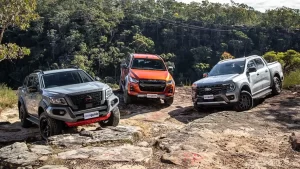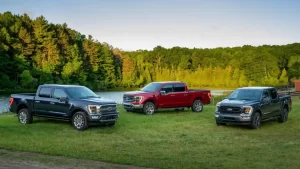The Future of Flying Trucks: Logistics in the Sky

Transportation innovation is flourishing apace; from driverless cars and new forms of mass transit to micromobility. One exciting possibility reminiscent of Back to the Future and Blade Runner movies could be flying cars.
Year after year, companies have pledged their promise of flying cars but very few have actually delivered on this promise. But with progress towards developing an air taxi beginning to be made, The Jetsons-esque skies may soon become our own!
How Will Flying Trucks Be Used?
Electric vertical takeoff and landing (eVTOL) aircraft may offer the solution to on-demand air mobility needs, as these small craft can fly above traffic to deliver cargo directly to a truck-trailer combination or be dropped off by the roadside.
Few companies are developing vehicles capable of carrying more freight at lower costs and operating with zero emissions. One such concept uses hydrogen fuel cells that generate electricity via an electrochemical reaction between water and oxygen to power its operation; these zero emission vehicles can travel up to 1,000 km and be refueled quickly in minutes.
Bell Helicopter Textron and a Japanese shipper have joined forces to develop an autonomous flying truck for cargo deliveries at medium to long distances, in response to labor shortages within logistics industry. The system will ascend vertically before moving horizontally at 160kph carrying up to 450kg at 160kph speed. It could make up to 160 deliveries every hour on average per route!
How Will Flying Trucks Be Powered?
While it might sound absurd to combine a truck and an airplane into one machine, some companies are actually working on just such an approach.
Workhorse Group, one such company, plans to develop hybrid flying trucks capable of transporting both freight and passengers. Their initial trucks will be tailored towards military applications like casualty evacuation and supply delivery.
These vehicles will be powered by hydrogen fuel cells, which utilize water and electricity to generate power. Furthermore, hydrogen storage could help mitigate climate impacts.
Analyst Mike Ramsey of Gartner notes that Alef’s plan is ambitious. Mass production of flying cars must meet all safety regulations similar to road vehicles; thus posing significant production challenges.
How Will Flying Trucks Be Built?
Buyers today expect their vehicles to come equipped with standard built-in safety features, and future flying trucks could feature sensors that alert drivers of blind spots or potential hazards as well as automated steering assistance to help avoid collisions.
Engineers like Sebastian Thrun envision a future where people drive hybrid electric vehicles that can travel on roads or fly over cities. His company, Workhorse, already sells plug-in hybrid electric delivery trucks to UPS, FedEx and Cintas.
He concedes that full automotive certification will take several more years before they’re available on the market, so his initial target market will consist of luxury joy rides for rich people – hopefully starting sometime this year, with prices set at $250 per rider.
How Will Flying Trucks Be Piloted?
Although military hybrid flying trucks have long been discussed on drawing boards, California-based transportation innovator Advanced Tactics may have taken an edge with their Black Knight Transformer road-driveable multi-copter. Utilizing aerodynamic techniques adapted from airplanes to help boxy truck trailers travel down highways more slickly – saving fuel and making roads safer to navigate – Advanced Tactics’ aircraft uses aerodynamic control techniques developed specifically for airplanes in order to streamline them across highways in an aerodynamic fashion that saves money while saving fuel while making roads safer to navigate – saving both costs as well as making transportation innovation an unprecedented advance!
Flying trucks need places where they can take off and land safely, receive maintenance, recharge their batteries and refuel their tanks – this may vary depending on traffic demands during peak travel periods of both day and night.
Workhorse plans to use its HorseFly drones to make short hops between stops without forcing a driver out of line of sight; but that doesn’t rule out full automotive certification for this technology.
How Will Flying Trucks Be Operated?
As with planes, flying trucks must also be approved by airports for flight and must adhere to stringent safety standards. To prevent erratic driving patterns, they’ll probably have to follow predetermined routes.
At its core, road-driveable multicopters like the Black Knight Transformer could use an air circulation system to lift their trailers – relieving some of the strain placed upon its tires while simultaneously decreasing rolling resistance and fuel consumption while decreasing aerodynamic drag.
Flying trucks will typically be operated from a central control room rather than directly by their pilots on the fly; this should make them less susceptible to hijacking or other forms of attack.







